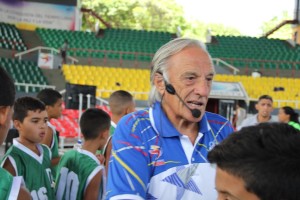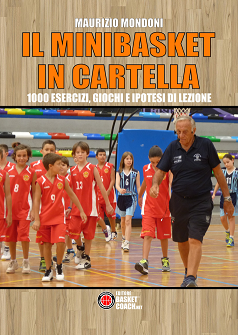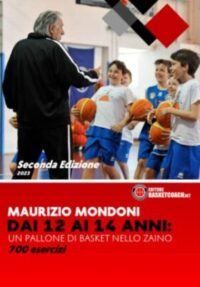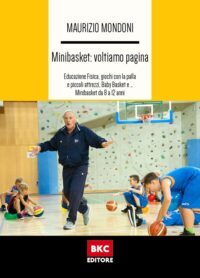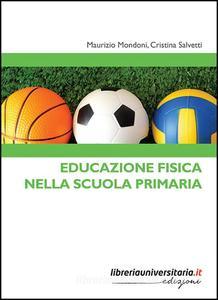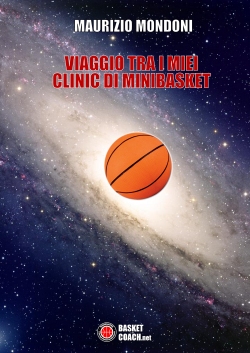Methodology for teaching minibasketball
METHODOLOGY FOR TEACHING MINIBASKETBALL
Preamble
The principle underpinning this didactic progression is that of teaching Minibasketball to children, not in terms of the basketball technique, but according to their way of playing.
If one observes this principle, the various technical gestures and tactical behaviour can be introduced and absorbed through game playing.
This does not mean of course that all that needs to be done is to propose children some games and let them play, hoping that their performance improves of its own accord.
The coach role in proposing and developing play is that of allowing children to deal with new difficulties and problem situations that need to be solved.
Questions and planning
Before presenting children with the drill or game, the coach must be able to answer the following questions:
- who are the children playing and what can they do? (initial evaluation);
- what purpose do the game and drills being proposed serve?;
- how must they be presented? (methods);
- when must they be presented?;
- how must they be who performed? (performance technique);
- what sort of feedback must be used?;
- what must be observed?;
- what must be verified in the middle? (verification and intermediate evaluation);
- what must be verified? (verification and final assessment).
Programming or planning, is a very important and effective development tool and may be described as “the circuit of the fundamental operations to be performed to achieve an objective according to teaching practice that can be verified, improved and transferred to other situations after being tested on the basic of a successful but not reproducible project”.
The sequence of correct didactic-educational planning is as follows:
- analysis of the initial situation;
- choice the goals (compulsory, optional);
- choice of teaching methods (inductive and deductive);
- use of available means;
- practical handling of practice;
- intermediate assessment for monitoring purposes;
- final assessment for monitoring purposes.
Control activity is not only a final activity, but also an activity that should be performed during all phases, enabling the coach to verify whether set goals have been achieved.
Technical-didactic planning
Teaching Minibasketball by goals remains the main task of every Instructor. A common technical-didactic programme of teaching for all Instructors may facilitate children’s motor learning. A lot of children drop out of Minibasketball because they stop enjoying the pleasure of learning and improving or because the coach does not gratify them when, after having made great efforts, they achieve a given result (which for them is very important).
These goals didactic-educational are:
- compulsory: education and development of the sensory-motor system, of motor and postural patterns, of motor abilities and skills;
- optional: acquisition and development of specific Mini Basketball tactical and technical abilities.
All children must pursue compulsory goals, whereas optional goals must be pursued only after compulsory goals have been attained.
The choice of goals depends on the age of children and on their initial situation and forms the basis for deciding:
– what should be taught;
– when to teach;
– how to teach ;
– which methods should be used to teach.
Sometimes the coach is not over-concerned about going into the problem of choosing goals and the means needed to achieve them.
He is sometimes concerned with pursuing only the optional goals and using only analytical exercises, making continuous corrections.
The choice of drills and games must come after the identification of goals. The choice of the goals for a course of practises (annual, monthly, for each single practice) is of fundamental importance.
The coach must pay great attention to this aspect, which is often taken for granted; he must ask himself about the technical models to be presented and goals to be achieved, namely:
- whether it is better to “liberate” motor imagination and creativity in children;
- whether it is better to fix some “technical goals” useful for improving the performance technique of a gesture or movement.
A Minibasketball practice (two or three times a week) lasts around an hour and a half.
There should not to be many children (especially if it is with younger children) and equipment and balls must be available in numbers suitable for the number of children participating.
The coach must not waste too much time during the practice, he must not correct too frequently (in the beginning), he must let the children play (play to dribble, to shoot, to pass, etc.), present them with problem-situation to be resolved and not supply them with ready-made solutions to these problems.
Sometimes children do not quickly grasp suggestions made by the coach (because he uses difficult language, speaks too quickly, does not demonstrate the situation well or demonstrates it too quickly) and they are unable to reproduce the situation correctly.
Playing ability in Minibasketball
Through the play, the child reconstructs situations in which he projects all the tendencies running parallel to his inner reality.
By playing, he believes himself to be free, creating imaginary situations, dealing with them in an active fashion and dominating them.
In Minibasketball the child to beat an opponent by dribbling past him and to score a basket (1 vs 1) and in this situation the child must search to solve a problem.
Knowing how to play Minibasketball does not mean learning how to perfectly execute all movements or single plays rather, it means knowing:
- what one can do with one’s body in space and time;
- which basket is to be attacked and which is to be defended;
- who one’s team-mates are;
- who one’s opponents are;
- what one can do with the ball when attacking;
- what one must do in defence;
- what the playing rules are.
To be able to begin playing with others, a child must first have tried playing alone /dribbling, shooting), then he must measure to another child (1 vs 1) and finally must play with others (2 vs 2 and 3 vs 3).
To do all this, the child must have understood the game in its entirety and he must be able to understand the movements on court with and without the ball, the basket he must shoot at and the basket he has to defend.
If all of this has been previously explained, the child will pursue “his own” playing strategy, but if he has been accustomed to working analytically, he will not pursue any strategy, but he will perform only what the Instructor wants, leading to a total elimination of his creativity and motor fantasy.
The child’s offence strategy must take consideration the following factors:
- if his team is in possession of the ball, what must he do?
If he is in possession of the ball, the first thing he must do is ensure that it is not taken away from him, he must try to beat his opponent by dribbling, move towards the opponent’s basket and try to “score”, if he is in difficulty he must try to pass the ball to an “unmarked” team-mate.
If he is not in possession of the ball, he must try to become unmarked to receive the ball.
If he loses possession of the ball, he must immediately change mentality and from an attacker turn into a defender.
The child’s defence strategy must take into consideration the following factors:
- what must he do if his team is defending?
He must try to regain possession of the ball “by attacking the attacking team”) he must prevent the attacker not in possession of the ball from receiving it without difficulty; he must prevent the attacker in possession of the ball shooting immediately or making an easy pass.
If he regains possession of the ball, he must immediately change mentality and go from a defender to an attacker.
All of the above must not be overplayed by the coach; children should simply be made to understand when they have to dribble, pass or shoot and how they have to defend without committing a futile foul on the attacker with or without the ball.
One should bear in mind that children are capable of playing 2 vs 2 and
3 vs 3 quite well, but playing 5 vs 5 is very difficult for them, since they are still unable to handle the space available to move with and without the ball.
Children must be made capable of taking decisions; they must be able to make mistakes without fear of being punished by the Instructor.
If the work in the gym is well planned and scheduled, results will undoubtedly be positive.
After having trained sensory-perceptive abilities and motor and postural patterns (6-7 years), it is then necessary to teach and develop general motor abilities and skills in order to acquire specific motor skills (game fundamentals), starting off from the four playing rules of Minibasketball and concluding by getting his children to play 3 on 3 in free form (8-9 years).
From 3 vs 3, 4 vs 4 to 5 vs 5 free matches, the coach must attempt to guide children to playing a more organised form of 5 vs 5 game, using a mixed teaching method (from global, passing through an analytical stage).
The practice of Minibasketball“When the practice is taken over by technical experts who, aiming to achieve certain results, forget the educational and formative goals of sport, then these practice become a negative factor in the overall formation of the person”.
The contents of the practice must be planned. They must be amusing, useful, “targeted” towards a gradual increase in specific and general resistance, strength, rapidity, coordination and sense of balance, and centre on the teaching of basketball fundamentals (first as a game and later teaching).
The practice must be “modular” (with time for work and time for rest) and generally divided (for goals and not for minutes) into 3 parts:
- a first part, working with and without ball, in pairs, with other game props, to educate and develop basic motor patterns (standing still, on the move); exercises must always be suggested in a different way, from easy to difficult, interesting and motivating;
- a central part, in which working on games of run, throw, of receiving of dribble, of passing, relay-race, trial-course (for children 6-7 years old), on games of dribble, passing, shoot and defence (rules from which the coach will evaluate the fundamentals of basketball for children who are 8-9 years old) and work focuses on the fundamentals (in the form of a game – base game) and combination of the fundamentals (for children 10-11-12 years old);
- a final part, with fun games (for smaller children), mini-matches (for older children) and matches 5 vs 5 (to verify work done).
The Instructor-Educator of Minibasketball
It is very important to teach and education is a fundamental. Teaching-educating is a difficult job, and requires a degree of maturity, which can only be reached through experience, determination, learning from mistakes, self-criticism, self-confidence, ongoing dialogue with others and the desire to well improve.
It is certainly difficult to be a good Minibasketball Instructor. It becomes even more so when we complicate this role ourselves by not interpreting the responsibility that we have shouldered in the right way. The relationship with children must be based on mutual esteem.
The Instructor must be able to get everyone involved using his charisma, his teaching skills the right method, professionalism and culture.
The Instructor must be continuously updated, not only from a technical point of view but also from a biological, psycho-pedagogical and social viewpoint.
He must plan his practices, set goals and verify them, and be able to accept both criticism and compliments in a balanced fashion.
He must be able to accept defeat and not gloat over victory. He must be nice. In short he must be a “leader”.
Minibasketball year ranges
In Minibasketball we can distinguish 3 different ranges of years:
° 6-7 years;
° 8-9 years;
° 10-11-12 years.
The goals
° 6-7 years
At the age children’s sensory-perceptive abilities, motor and postural patterns and motor abilities need to be trained and developed by playing with the body, small props and larger equipment. The more gestures and movements are presented, the more a child’s “motor skills” will improve.
Drills and games must be presented in a general form, asking them questions like “Let us see who can.”
The practice must be held in a tranquil, relaxed climate. Children must make their own “guided” discoveries (music helps a lot and facilitates learning).
The analytical teaching of basketball fundamentals should be avoided at all costs at this age, proposing instead the performance of motor patterns in playful form:
- running;
- jumping;
- throwing and catching;
° 8-9 years
At this age it is necessary to continue to train and develop basic motor (perfecting techniques), so that they can gradually be transformed into specific motor abilities through the training and development of motor abilities (especially coordination capacity, joint mobility at the same time as conditional capacities).
Children must play at dribbling, passing, shooting, defending; all these activities should be presented by the coach in a general form, taking as his starting point the playing rules of Minibasketball.
But before analysing Minibasketball playing rules, it is important to make children able to understand:
- the movements they can perform in space and time;
- the space available to play Minibasketball;
- what they must do when playing offence;
- what they have to do when playing defence;
- the rules of the game.
When a child is “ready”, playing rules can be presented, from which basketball fundamentals can later be drawn:
“You cannot walk or run while holding the ball, so in order to move on court you must dribble”;
“To win the game you must score more baskets than your opponents, therefore you have to shoot in the opponent’s basket”;
“You cannot always play alone against everybody, but having team-mates, you need to pass them the ball”;
“The opposing team must not score more baskets than your team; therefore you have to defend your own basket”.
From the different “base-games”, which are not only 1 vs 1, 2 vs 2, 3 vs 3 (global form), but also situations of outnumbering (1 vs 2, 2 vs 1, 3 vs 1,
3 vs 2, etc., can also be any drill-game or pre-sporting game, the coach can observe what is happening on court, see that the playing rules are obeyed and draw from play “incorrect situations” or aspect that have not been well learnt by children.
In this way he will “work” on what has not been well learnt or understood (analytical form), presenting drills-games used to improve incorrect situations, before returning to the global game to verify whether playing ability (individual and team) has improved.
For example, during the basic-game 1 vs 1, the coach observes that children do not know how to dribble. He will “work” on dribbling, proposing “ad hoc” drills, and then return to 1 vs 1 situations to verify whether dribbling has improved.
The aim is to get children to play first 3 vs 3 free and at the last 5 vs 5 free.
° 10-11-12 years
At this age work to train and develop motor abilities continues, playing fundamentals are perfected and corrections become more analytical in nature. Is most important to begin from a global situation (1 vs 1, 2 vs 2 and 3 vs 3 free situations), before going on to an analytical plane and then returning to the global situation.
Specialist roles must not be established, gestures and movements must not yet be extremely technical, the game must be in a free form and playing ideas (in offence and defence) that the coach presents must initially be simple.
It is important to work on real situations of outnumbering; the coach needs to be patient, respect different learning rates and proposed drills that are not too long or complicated.
The final aim should be that of bringing to play 5 vs 5 in a slightly more organised form.
The basic-game
The basic-game (1 vs 1, 2 vs 2, 3 vs 3, etc., but also a game pre-sportive or an exercise) is the ideal platform for the coach to teach Minibasketball after having built up a sound multilateral motor base.
Remember: “Minibasketball is not to be considered as a form of miniature Basketball”.
Minibasketball is a game-sports activity, with important socialization, participation and communication values, with leads to the harmonically development of the body.
Motor skills are taught and developed by playing and basketball fundamentals are taught in the form of competition, games (from easy to more difficult) and later, gradually, in the form of game-drills and teaching drills.
It is important not to demand the perfect execution of a skill too early (dribbling, passing, shooting) or of a movement in offence without the ball (getting free, cutting, rebounds, weaving) or in defence (defensive slides) before the work necessary for the education and structuring of motors patterns has been completed.
Proposals go from easy (6-7 years age) to difficult (8-9-10-11-12 year’s age) and the coach has to use them in different ways, related to children’s different ages, different motor experiences and different motor experiences.
Transforming basic motor scheme (basic motor or motor pattern, simple abilities) into fundamentals (complex motor abilities), through education and development of individual motor abilities, should be our goal.
It is very important to educate and develop motor abilities, because this is the only way we have to improve the executive technique of individual fundamental of basketball.
BASKETBALL FUNDAMENTALS: dribbling, shooting, passing, movements in offence without ball, defence
It is impossible to try to teach the fundamental of basketball in an analytic way to children who are 6-7 years old.
At this age, the Instructor has to educate and develop sensitive-perceptive abilities, motor and postural schemes, motor abilities (above all coordinative motor abilities and articular mobility).
Then, at 8 years age, the Instructor has to keep educating and developing motor abilities, teaching the fundamentals of game.
He has to do this starting from rules and global situations of game (big games, propaedeutics games, base-game 1 vs. 1, 2 vs. 2, 3 vs. 3) and then, the Instructor has to analyse, educate and develop the different situations that could happen during real game, through drills-games.
At 9-10 years old, the Instructor has to keep doing the work he did in advance, starting from global situations analysed in advance, to get progressively to play 5 on 5 in free form.
The fundamentals of game must be taught in a progressive way (extrapolating them from rules), firstly in an amusing way and secondly in the technical way. A good Instructor starts teaching from what he observes during game; rules have to teach during the game. When children are 11-12 years old, the coach has to continue the work of developing motor abilities (conditional and articular mobility and coordinative), the fundamentals have to be progressively improved in order to play 5 vs 5 harmoniously.
3 vs 3
If you want that your children play a good basketball 5 vs 5, you must often play 3 vs 3.
Our intention is to construct a creative, thinking child who knows how to play not like a robot.
After teaching sensorial and perceptive skills, motor and postural schemes, capacity and motor skills, the Instructor passes to teach the bases of the game till the children can play 3 vs 3 and after 4 vs 4 and 5 vs 5, without a special scheme or tactics.
One of the most important problem of the Instructors is how his children can play during the tournament of Minibasketball, so that they prepare scheme of the game, particular defence and think if soon or later drown up the stronger starting-five and so on.
Certainly this isn’t the best way to obtain that a team plays an organized game.
Practice simple like base for teaching
Children who play Minibasketball must have positive attitudes for practice and for regular physical growth and in order to obtain these goals, the coach must use a methodology in teaching. He has to capture children’s interest and he has to make them curious.
In this way, it is possible to incite children’s spontaneity and creativity.
Simple plays are exercises to do as a game and every exercise is made to reach a specific purpose.
They are simple plays to do, because rules are easy:
- reduced player number who play the game;
- little court;
- simple rules;
- the game similar to basket action;
- reduced skill for children.
When child has any difficulty, the Instructor cuts off the technical action that there is in global play, he will show and explain to children the correct execution, giving in this way a clearer function.
The Instructor must do in this way because explanation is a necessary condition to improve level game.
We do not have difficult plays, because they are made for children; they serve to improve communication and cooperation between children and they serve to touch the ball more and more.
In this period is obligatory man to man defence.
We need a new model of competition and practice for children.
Conclusion
A child learns what he really lives and for this reason the Instructor must manage to create for him a real situation in the practice, so that when he plays the game, he can find the same situation that he had tried in the practice and to be good in getting over the sparkling way.
2°STAGE: beginning of sport specialization (13-15 years)
Our proposal for a correct program (13-15 years) age bracket, takes into account the work which was carried out previously, both general and specific.
When planning, it is important to consider both the boys and girls who have played Minibasketball in previous years and those who have not. The proposals will, therefore, be in different contents and the coach will aim to continue the work previously carried out, but also be ready to start from scratch if the youngsters have not participated in any motor or sports activities previously.
The coach’s work will aim to develop motor abilities, for a general physical preparation, but also a more specific preparation for basketball.
The fundamentals must be analyzed and improved and there will be a gradual progression to the idea of teamwork in offence and in defence.
In this period is very important to define the rolls of the players:
- play-maker;
- guard;
- forward
Let us analyze the contents of basketball practice.
In the initial phase (physical conditioning) there will be exercises with and without ball.
Physical conditioning exercises with the ball are part of the coach’s required skills, so that he may teach, motivate and also amuse the youngsters.
Physical conditioning exercises with the ball will improve ball-handling, increase execution speed, improve peripheral vision and specific movements for basketball. In this period is very important to teach the stretching.
They will help the boys and girls “get to know the ball”. The drills will at first be easy and increasingly become more difficult.
Exercises for physical conditioning without the ball are good practice and help to develop general and specific endurance, rapid-strenght and reaction, execution and movement speed.
They also help to teach the fundamentals without the ball (change of speed, change of direction, sense, reverse walking, pivot).
After the first phase, the central part of the practice will analyze the game-ideas which illustrate the game of basketball. These game-ideas help to get an overall understanding of basketball, extrapolating different basketball fundamentals from the game-ideas. Using game-drill related to game-ideas, the coach demonstrates how a match begins, what to do in the case of a side-line or base-line in bounds and also gives the boys and girls an overall idea of what a basketball match is all about.
These game-ideas and other ideas deriving from the coach’s imagination and experience will determine the series of technical elements (dribbling, shooting, passing, defence) to be practiced in the form of game-drills and teaching drills. The final part of the practice will be a match, which is a verification of the work carried out. After having analyzed game-ideas and having developed their contents, now is the time to analyzed team offence.
At this age, boys and girls are already familiar with the rules of the game, have a good control of their bodies and are physically strong, with good balance and coordination skills and are strong enough to withstand exertion.
A few simple methods will be described, with free shooting:
- “5 out”;
- give and go;
- give and go behind;
- give and go away;
- give and blocking;
- fast break.
In this period is possible to use man to man defence and zone defence.
3° STAGE: continued specialization (16-19 years)
Physical conditioning exercises with the ball are part of the coach’s required skills. Physical conditioning exercises with the ball will improve ball-handling, increase execution speed, improve peripheral vision and specific movements for basketball. The fundamentals must be analyzed and improved and there will be a gradual progression to the idea of teamwork in offence and in defence.
In offence is possible to prepare schemes against zone defence and man to man defence; in defence man to man and zone defence.
4° STAGE: advanced sport specialization (over 19 years)
Physical conditioning exercises with the ball are part of the coach’s required skills (ball-handling, stretching, work with weight). The fundamentals must be analyzed to obtain new ideas in offence and in defence.
—————————————
ALTRI ARTICOLI GIA’ TRATTATI SUL BLOG NELLE CATEGORIE. CLICCA SULLE CATEGORIE PER LEGGERLI.
TECNICA
ESERCIZI
COMUNICAZIONE
SCUOLA E MINIBASKET
MINIBASKET NEL MONDO
PEDAGOGIA
FISIOLOGIA
VIDEO
SCARICA GRATIS LA MIA DISPENSA L’ALLEDUCATORE
Vi ricordo che potete iscrivervi alla mia newsletter gratuita, per restare sempre aggiornati sul #minibasket a misura di bambino. In regalo la dispensa l’Alleducatore.
Prof. Maurizio Mondoni
#iostoconibambini
#alleducatore
#minibasket
